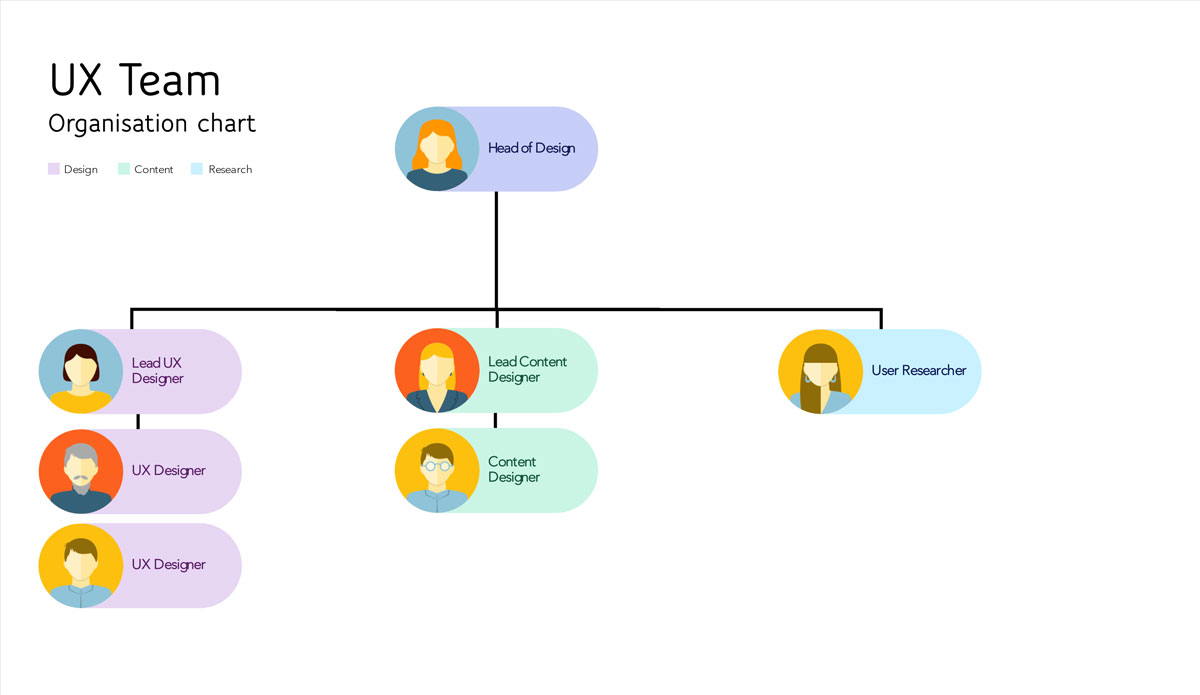
Project information
- Category: Leadership & strategy
- Clients: Capita
- Summary: Creating a UX capability from an initial team of two.
Capita
Scaling a Product Design Team
When I first joined the Government Services division of Capita I was the sole UX Designer paired with a strong User Researcher. We had a strong, collaborative partnership working closely on ideating, prototyping and researching proposed designs and testing feature ideas for the whitelabel product we were working on, however we could see the potential to grow the team given we were reliant on contract staff especially in the field of content design. My goal was to create a UX capability comprised of specialists in each of the areas of the UX field - dedicated User Researchers, experts in Content Design, and enthusiastic UX Designers. In order to create this dedicated capability my first task was to create a recruitment process which would enable us to find the talent we needed to scale the team.
Recruitment
I crafted a two stage interview process which would enable Capita to find candidates with the relevant experience and skills for each of the positions we were recruiting for. Each of the interviews have been tailored around the specialism we recruited for, with each second stage interview having an associated task for the candidate to complete which was related to the work they would be doing if they were successful in joining the team. This gave candidates a flavour of the work before they made a commitment, and for us it gave an opportunity to see how each individual would approach a piece of work. In each of our specialisms we highlight the importance of having knowledge and experience around accessibility best practices and to always be mindful of inclusive design. This is especially important given our work focuses mainly in central and local government services, and we need to be building WCAG 2.1 AA compliant solutions to meet citizen needs. Over a period of a few months we were able to scale from our initial team of two, to a department of seven.
Our Product Design Team
After creating the initial recruitment process, I spent hours looking at CVs, reviewing portfolios and attended many, many interviews, and I was able to scale up and manage our product design team from an initial team of two team members, to a three tiered Product Design UX capability comprising of UX Designers, User Researchers and Content Designers, increasing the department headcount to 7 specialists, who each advocate a design thinking approach to solving problems and addressing user needs.
Within our Product Design UX capability we advocate for UX to get involved at the very beginning of a project, and for our specialists to remain involved through the development phases to ensure the user of our products is represented throughout our agile product lifecycle. UX Designers and Content Designers work closely with our engineering department to ensure the delivery matches our intial designs, and we conduct multiple rounds of user research to validate any requirements and designs based on either assumptions or earlier research discovery.
As part of growing our capability I have also worked closely with the team to increase our quality assurance process for design work - introducing regular design crit sessions to enable regular group feedback and to foster collaboration, as well as advocate for mentoring and volunteering opportunities within and outside of our organisation. I have also introduced UX process best practices, following the Design Council's Double Diamond model, as well as tailoring a best practice UX design model for working within the Innovation workstreams.
Future
As our pipeline of work increases there will be more opportunities to scale the team further and to increase our user research specialism. We are constantly reviewing our internal processes and regularly review our recruitment stages to keep tailoring our interview process to be relevant to the work we are producing. We also host regular retrospective meetings to understand how our current ways of working are performing, and to highlight any areas that could be iterated on further, or to highlight any potential process improvements.